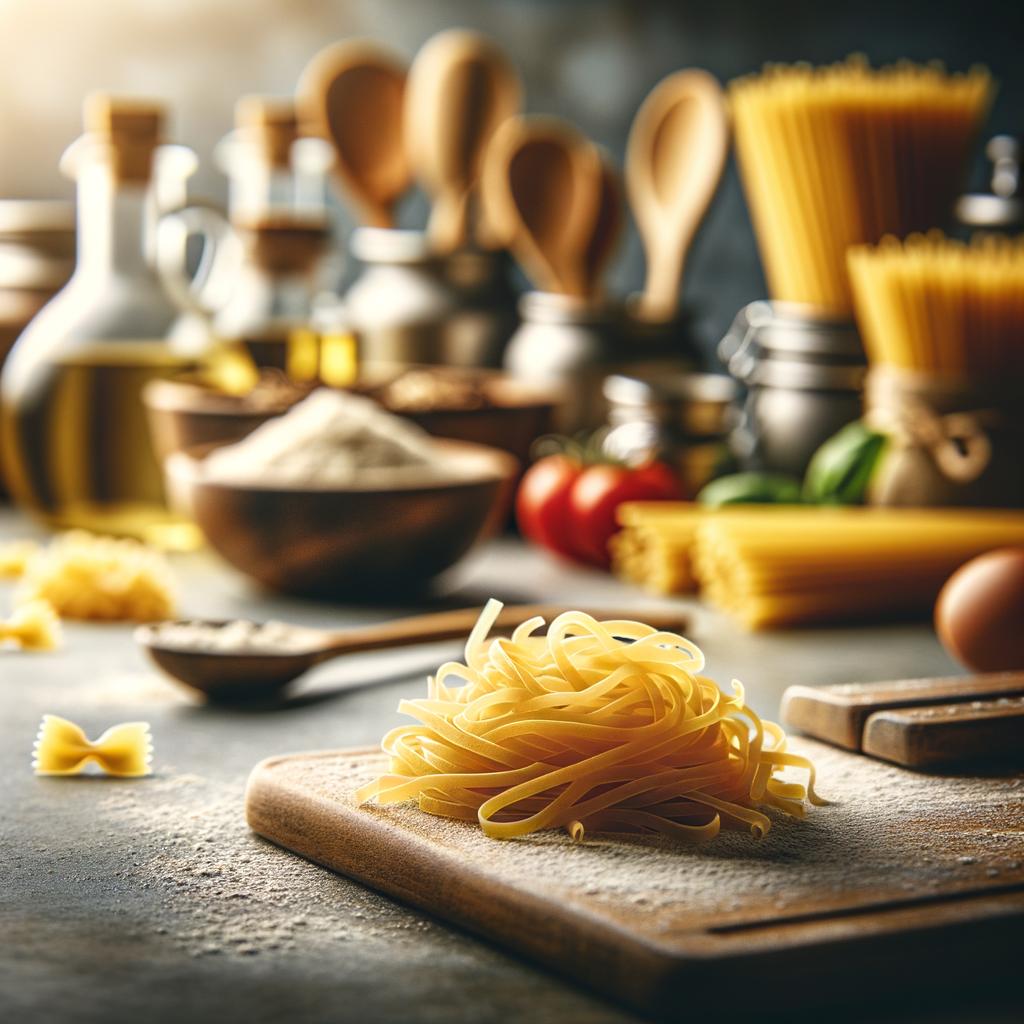Tonnarelli Pasta

Description
Tonnarelli pasta, a treasure from the culinary heart of Italy, is a type of square spaghetti, often referred to as spaghetti alla chitarra. It's a sight to behold, with its thick, robust strands that are slightly rough in texture, perfect for clinging onto rich sauces. The pasta's flavor profile is subtly wheaty, offering a delicate, yet satisfying taste that becomes a canvas for the various sauces it's paired with. What sets Tonnarelli apart from its pasta siblings is its square cross-section and the unique texture that comes from being traditionally cut on a 'chitarra', a tool that resembles a guitar.
Primary Uses
Tonnarelli pasta is a versatile ingredient that shines in a multitude of dishes across various cuisines, particularly those of central Italy. It's most famously used in 'Tonnarelli Cacio e Pepe', a simple yet divine Roman dish that combines the pasta with Pecorino Romano cheese and black pepper. Tonnarelli also finds its place in heartier dishes featuring robust tomato sauces or rich meat ragus. Its rough texture makes it an ideal carrier for heavier sauces. Beyond its culinary uses, Tonnarelli holds cultural significance in Italy, often being the star of family Sunday lunches and festive celebrations.
History
The history of Tonnarelli is as rich and satisfying as the pasta itself. Its origins are rooted in the Abruzzo region of Italy, where it was traditionally made using a 'chitarra', lending it its other name, 'spaghetti alla chitarra'. This pasta's use and popularity have evolved over time, spreading from the rustic kitchens of Abruzzo to the bustling trattorias of Rome and beyond. There's a romantic tale of how the 'chitarra' came to be used - it's said that a resourceful Italian housewife, unable to afford a traditional pasta machine, used her husband's guitar to cut the pasta, thus giving birth to this unique pasta shape.
Nutritional Information
Tonnarelli pasta, like most traditional pasta, is a good source of carbohydrates, providing energy for the body and brain. It also contains some protein and is low in fat. The pasta's nutritional profile can be enhanced by using whole grain flour, which adds fiber and various vitamins and minerals. Compared to other pastas, Tonnarelli's thicker strands may make you feel fuller faster, potentially aiding in portion control. However, as with any pasta, moderation is key to ensure a balanced diet. The health benefits or risks associated with Tonnarelli are largely dependent on what it's paired with - a light, vegetable-based sauce will offer a healthier dish than a heavy, cream-based one.

